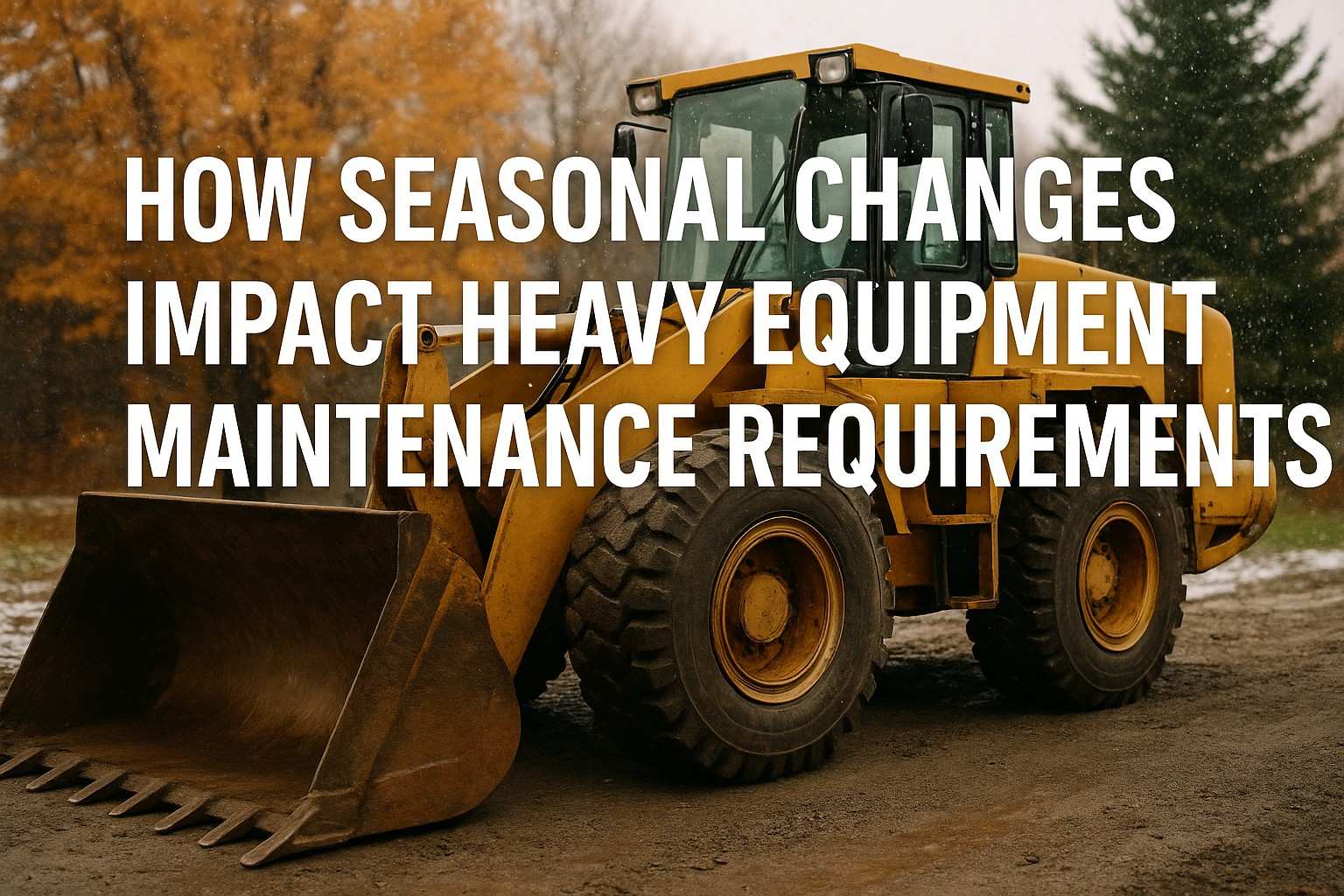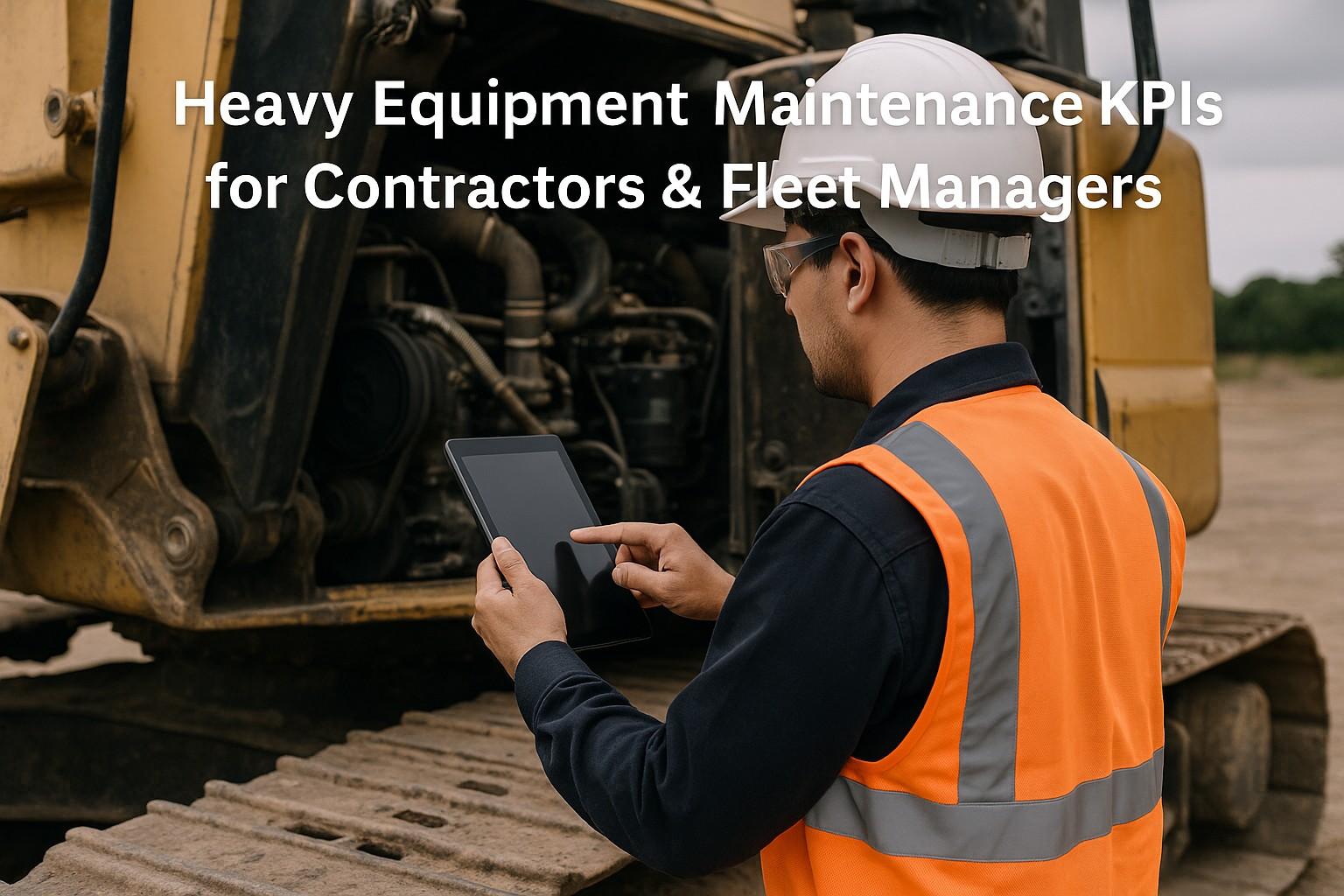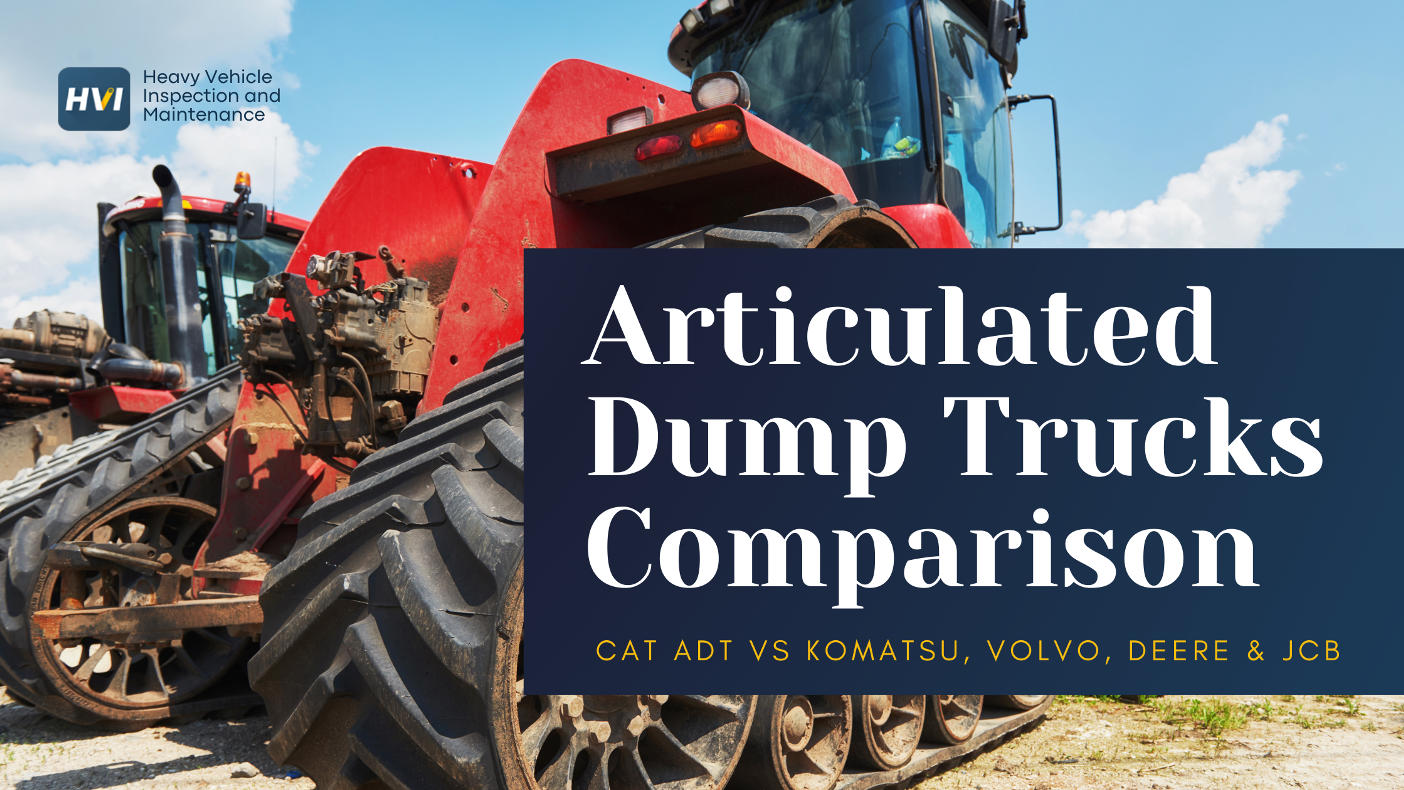This comprehensive guide to truck preventive maintenance combines 20+ years of real-world fleet management experience with cutting-edge AI technology insights, addressing practical challenges like driver compliance, cost control, and breakdown prevention. Written in an authentic, conversational tone, the article covers everything from basic maintenance schedules to advanced predictive analytics, showing how modern fleets reduce breakdowns by 70% and cut maintenance costs by 30% through smart technology adoption. It provides actionable advice on implementing AI-powered maintenance tracking, optimizing fleet PM schedules, and transitioning from reactive to predictive maintenance strategies that deliver 300-500% ROI. The guide positions HVI as the industry leader while offering genuine value through honest assessments, real-world examples, and practical implementation strategies that help fleet managers, safety officers, and operators master modern truck maintenance programs.
Key Takeaways
- Effective truck preventive maintenance reduces breakdowns by 70% and extends vehicle life by 20%
- AI-powered maintenance tracking optimizes schedules and predicts failures before they occur
- Proper PM programs deliver 300-500% ROI through reduced downtime and repair costs
- Digital fleet PM schedules ensure compliance and eliminate missed maintenance intervals
In 2025, truck preventive maintenance has evolved beyond simple oil changes and tire rotations. Modern fleet operations demand comprehensive, data-driven maintenance programs that leverage advanced technology to predict failures, optimize schedules, and maximize vehicle uptime.
The stakes have never been higher for fleet managers. With the average cost of truck downtime exceeding $500 per day and major repairs often reaching $15,000 or more, implementing a robust preventive maintenance program isn't just beneficial—it's essential for competitive fleet operations. This comprehensive guide explores the latest strategies, technologies, and best practices that define successful truck preventive maintenance in 2025.
Revolutionize Your Truck Maintenance Program
Join thousands of fleet managers using HVI's AI-powered maintenance tracking to reduce breakdowns by 70% and cut maintenance costs by 30%. See how predictive maintenance transforms your operations.
14-day free trial • No setup fees • Cancel anytime
Understanding Modern Truck Preventive Maintenance
Evolution from Reactive to Predictive
Modern truck preventive maintenance has transformed from scheduled intervals to predictive analytics. AI fleet software now analyzes engine data, driver behavior, and operational patterns to predict component failures weeks before they occur, enabling proactive interventions.
Data-Driven Maintenance Decisions
Advanced telematics and IoT sensors provide real-time insights into vehicle health. Maintenance tracking software processes thousands of data points to optimize service schedules, reduce unnecessary interventions, and focus resources on critical components.
Regulatory Compliance Integration
Modern PM programs seamlessly integrate DOT inspection requirements, emissions compliance, and safety regulations. Automated documentation ensures audit readiness while digital fleet PM schedules eliminate compliance gaps and missed inspections.
Total Cost of Ownership Focus
Comprehensive maintenance programs consider the entire vehicle lifecycle, from acquisition to disposal. Strategic maintenance decisions optimize resale values, extend useful life, and minimize total ownership costs through predictive component replacement.
Essential Components of Truck Preventive Maintenance Programs
Engine and Powertrain Maintenance
The heart of any truck maintenance program focuses on engine health and powertrain components that directly impact performance and reliability.
- Oil and Filter Changes: Optimized intervals based on oil analysis and operating conditions
- Coolant System Maintenance: Regular testing and replacement to prevent overheating
- Air Filter Replacement: Monitoring and replacement based on air quality conditions
- Transmission Service: Fluid analysis and component inspection
- Differential Maintenance: Gear oil changes and seal inspections
Brake System and Safety Components
Critical safety systems require regular inspection and maintenance to ensure compliance and prevent accidents.
- Brake Inspection: Regular pad, rotor, and drum assessment
- Air System Maintenance: Compressor service and line inspections
- Steering Components: Regular alignment and component wear checks
- Suspension System: Spring, shock, and bushing inspections
- Lighting Systems: Comprehensive electrical system maintenance
Tire Management and Monitoring
Tire costs represent 10-20% of total vehicle operating expenses, making proactive tire management essential for cost control.
- Pressure Monitoring: Daily checks and automated TPMS systems
- Tread Depth Tracking: Regular measurements and rotation schedules
- Alignment Services: Preventing premature wear through proper alignment
- Load Distribution: Ensuring proper weight distribution and loading
- Seasonal Transitions: Appropriate tire selection for conditions
Technology Integration and Monitoring
Modern truck preventive maintenance leverages advanced technology for comprehensive vehicle health monitoring.
- Telematics Integration: Real-time vehicle health data collection
- Diagnostic Code Monitoring: Proactive fault code analysis
- Sensor Data Analysis: Predictive insights from IoT sensors
- Mobile Inspections: Digital inspection forms and photo documentation
- Parts Inventory Management: Automated ordering and stock optimization
Optimized Maintenance Schedules for Maximum Efficiency
Smart Scheduling Approach
Modern fleet PM schedules combine manufacturer recommendations with real-world operating data to create optimized maintenance intervals that reduce costs while maintaining reliability.
Daily Inspections
Critical safety checks performed by drivers
- Pre-trip inspection checklist
- Fluid level verification
- Tire pressure and condition
- Lights and signals testing
- Brake system function
Weekly Maintenance
Comprehensive system checks and minor services
- Detailed vehicle inspection
- Battery and electrical system
- Air filter condition check
- Exhaust system inspection
- Cleaning and washing
Monthly Services
Intermediate maintenance and system analysis
- Oil analysis and testing
- Brake system inspection
- Suspension components
- Diagnostic code review
- Performance data analysis
Quarterly Major Services
Comprehensive maintenance and component replacement
- Engine oil and filter changes
- Transmission service and inspection
- Differential and axle maintenance
- Cooling system service
- Air system maintenance
- DOT inspection preparation
Annual Overhauls
Complete system rebuilds and major component replacement
- Engine overhaul assessment
- Transmission rebuild evaluation
- Complete brake system overhaul
- Suspension system replacement
- Electrical system upgrade
- Vehicle lifecycle planning
AI and Predictive Maintenance Technologies
AI-Powered Maintenance Transformation
Advanced AI fleet software and predictive maintenance technologies are revolutionizing how fleets approach truck maintenance, delivering unprecedented efficiency and cost savings.
Breakdown Reduction
Maintenance Cost Savings
Schedule Optimization
ROI Achievement
Machine Learning Analytics
AI in maintenance leverages machine learning algorithms to analyze patterns in vehicle data, identifying subtle indicators that predict component failures weeks or months in advance.
- Engine performance pattern analysis
- Vibration and temperature monitoring
- Fuel consumption anomaly detection
- Driver behavior impact assessment
Intelligent Scheduling Optimization
Advanced maintenance tracking software optimizes service schedules by considering vehicle usage, operating conditions, and predictive analytics to minimize downtime.
- Dynamic interval adjustments
- Resource allocation optimization
- Technician skill matching
- Parts availability coordination
Real-Time Health Monitoring
IoT sensors and telematics provide continuous vehicle health monitoring, enabling immediate response to critical issues and preventing catastrophic failures.
- Continuous diagnostic monitoring
- Real-time alert systems
- Remote diagnostic capabilities
- Mobile technician dispatching
Integrated Fleet Management
Comprehensive platforms integrate maintenance data with fleet operations, providing holistic insights that optimize both maintenance and operational efficiency.
- Cross-platform data integration
- Performance benchmarking
- Cost-benefit analysis
- Strategic planning support
Cost-Benefit Analysis of Preventive Maintenance Programs
| Maintenance Approach | Initial Investment | Annual Downtime | Repair Costs | 5-Year ROI |
|---|---|---|---|---|
| Reactive Maintenance | Low ($5,000) | 15-20 days | $25,000+ | -150% |
| Basic Preventive | Medium ($15,000) | 8-12 days | $15,000 | 200% |
| Advanced Predictive | High ($30,000) | 3-5 days | $8,000 | 450% |
| AI-Powered HVI System | Premium ($50,000) | 1-2 days | $5,000 | 600% |
Investment Justification
Advanced truck preventive maintenance programs typically pay for themselves within 6-12 months through reduced downtime, lower repair costs, and extended vehicle life. The ROI compounds over time as maintenance efficiency improves.
Implementation Best Practices for 2025
Technology Integration Strategy
Successful implementation requires careful integration of new maintenance technologies with existing fleet operations and systems.
Staff Training and Development
Comprehensive training programs ensure technicians and managers can effectively utilize advanced maintenance tracking software and AI-powered tools.
Data Quality Management
Accurate data input and management are critical for AI fleet software effectiveness. Establish data quality standards and validation processes.
Continuous Improvement Process
Regular program evaluation and optimization ensure maintenance strategies evolve with changing technology and operational requirements.
Future Trends in Truck Maintenance Technology
Autonomous Diagnostics
Self-diagnosing vehicles that automatically schedule maintenance, order parts, and coordinate service appointments without human intervention.
5G Connectivity
Ultra-fast data transmission enabling real-time vehicle health monitoring, instant diagnostic updates, and seamless cloud-based maintenance management.
Digital Twins
Virtual vehicle replicas that simulate wear patterns, predict failures, and test maintenance strategies before implementation on physical trucks.
Master Truck Preventive Maintenance in 2025
The future of truck preventive maintenance lies in intelligent, data-driven programs that combine traditional best practices with cutting-edge AI technology. HVI's comprehensive maintenance platform provides the tools and insights needed to optimize your fleet's performance while reducing costs and maximizing uptime.
From predictive analytics to automated scheduling, the right maintenance program transforms your fleet operations, ensuring vehicles stay on the road longer, operate more efficiently, and deliver superior return on investment throughout their lifecycle.
Frequently Asked Questions About Truck Preventive Maintenance
How much can I save with a comprehensive truck preventive maintenance program?
A well-implemented truck preventive maintenance program typically delivers 300-500% ROI by reducing breakdowns by 70%, cutting maintenance costs by 30%, and extending vehicle life by 20%. The average fleet saves $15,000-$25,000 per truck annually through reduced downtime and repair costs.
What role does AI play in modern maintenance tracking?
AI in maintenance revolutionizes fleet operations by analyzing patterns in vehicle data to predict failures weeks in advance, optimizing maintenance schedules based on actual usage, and automatically adjusting intervals based on operating conditions. This reduces unexpected breakdowns by up to 85%.
How do I transition from reactive to predictive maintenance?
Transitioning requires implementing maintenance tracking software with telematics integration, establishing baseline data collection, training staff on new technologies, and gradually shifting from time-based to condition-based maintenance intervals. Most fleets complete the transition within 6-12 months.
What are the most critical components to monitor in truck preventive maintenance?
Critical components include the engine (oil analysis, cooling system), brake system (air pressure, pad wear), tires (pressure, tread depth), transmission, and electrical systems. Predictive maintenance technology monitors these systems continuously, providing early warning of potential issues.
How does digital fleet PM scheduling improve compliance?
Digital fleet PM schedules ensure regulatory compliance by automatically tracking DOT inspection due dates, maintaining detailed service records, generating compliance reports, and providing audit trails. This eliminates missed inspections and reduces the risk of violations by 95%.




